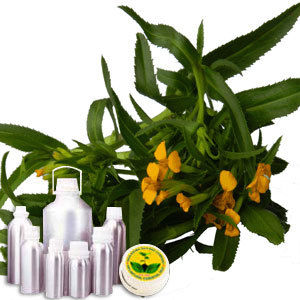Botonical Name | : | Artemisia dracunculus | |
CAS # | : | 90131-45-6 | |
Country of Origin | : | Western Asia | |
Color & Odor | : | Colorless to pale yellow liquid with rich Sweet & green spicy odor. | |
Solubility | : | Insoluble in water, soluble in alcohol and oils | |
Specific Gravity | : | 0.914 -0.956 @ 20° C | |
Optical Rotation | : | +1.5° - +6.5° | |
Refractive Index | : | 1.504 - 1.520 @ 20° C | |
Flash Point | : | >100° C | |
Major Constituents | : | Methyl chavicol, Eugenyl acetate | |
Plant Part Used | : | Leaves | |
Extraction Method | : | Steam Distillation |
DESCRIPTION:
Tarragon Oil is derived from tarragon herb. Countries like Hungary, the USA, Holland and France are the producers of this essential oil.This perennial plant has around 1 to 2 meters long straight stem and plain looking flowers having yellowish green color. Originally grown in Western Asia, Europe and southern part of Russia, this herb is accessible almost in all countries across the world. CONSTITUENTS:
trans-beta-Ocimene, Methyl chavicol, Eugenyl acetate, methyl eugenol , Limonene AROMATIC SUMMARY / NOTE / STRENGTH OF AROMA:
Middle note mild smell of this oil has intensely pleasant and spicy smell. Green color of this oil reminds about anise essential oil. BLENDS WITH:
Tarragon Essential Oil can be combined with rosewood, lavender, carrot seed and lime oils.COMMON NAMES:
This aromatic oil is commonly referred as tarragon herb oil, estragon oil, Artemisia dracunculus oil and artemisia dracunculus oil. USES:
This scented Tarragon Oil is an excellent remedy for internal spasm, menstrual pains, dyspepsia, nervous indigestion anorexia, flatulence and hiccups. It is also used as an essential part of vapor based therapy. This oil is used for massage purpose. Its captivating fragrance is used for formulating detergents, soft drinks, perfumes, soaps, alcoholic drinks and edible items. 


































